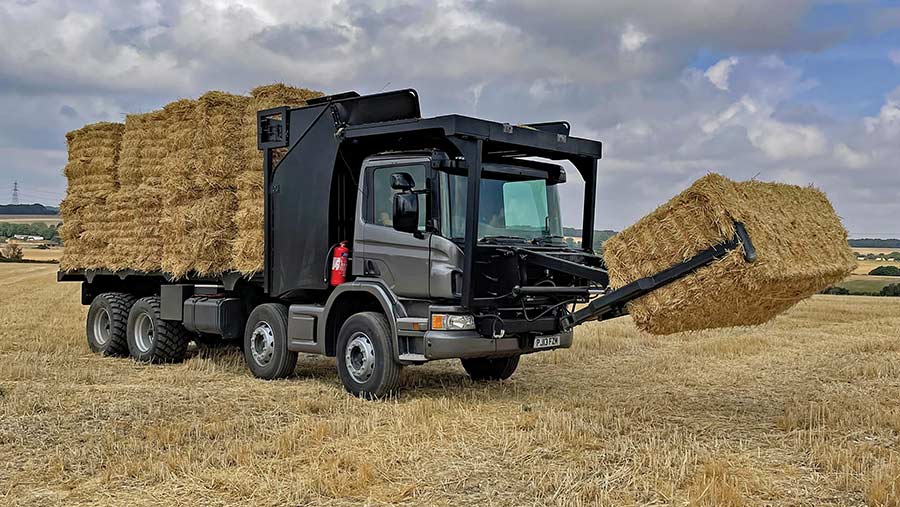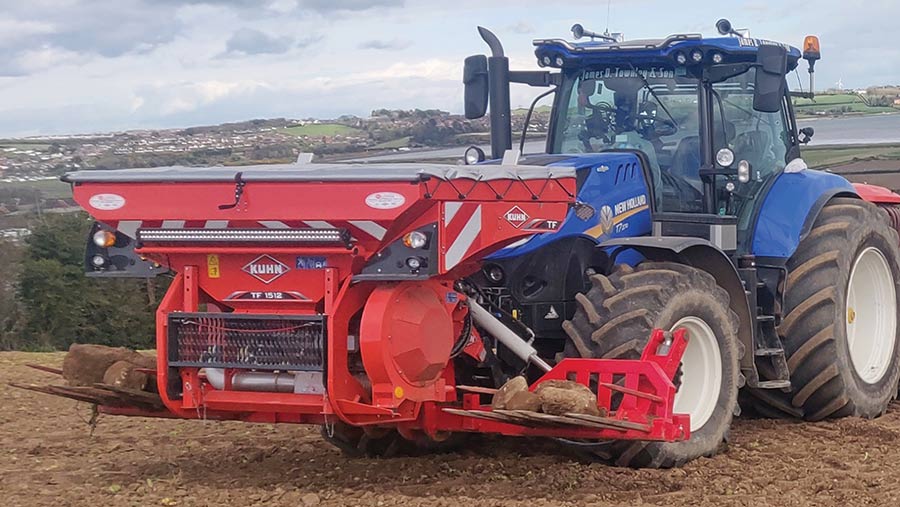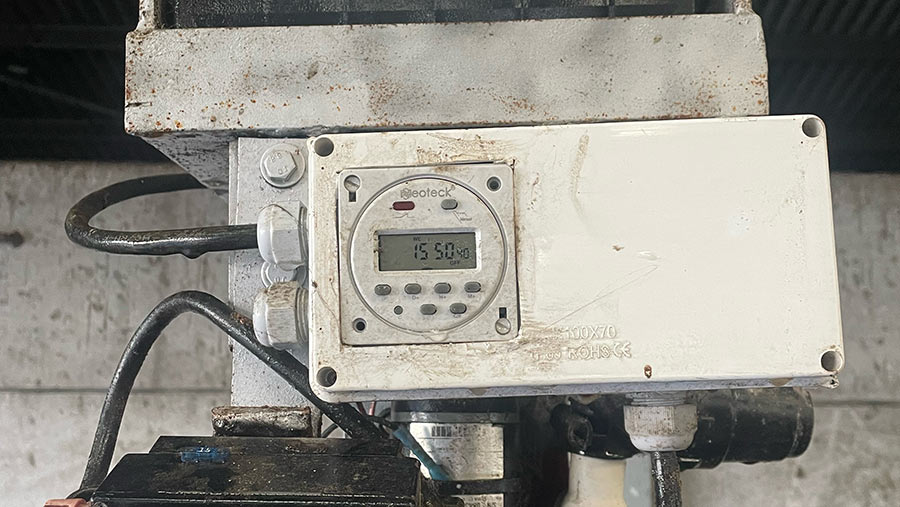FW Farm Inventions Competition returns with £2,550 prize pot
 Eastern Counties Straw built a self-propelled 16-bale collector © James Andrews
Eastern Counties Straw built a self-propelled 16-bale collector © James Andrews It’s time for another season of Farmers Weekly’s long-running Farm Inventions Competition.
With a back catalogue containing thousands of ingenious ideas, there’s nowhere better to read about workshop builds that have saved time, hassle or cold, hard cash.
And if you have designed a machine, gadget or knick-knack of your own, it’s time to get involved.
The competition’s format means that you can still win one of the top prizes even if you have built something small and relatively uncomplicated.
The total pot for this year is £2,550, with the results decided by a panel of journalists and farmers.
See also: Read about some of the best farm inventions
Categories
The entries are split into three categories: simple, intermediate and complex.
- Simple Items that took a day or so to knock together and are fairly basic in the way they work, but still save time or money.
- Intermediate Anything more complicated, perhaps with a simple form of hydraulic or electrical system.
- Complex Inventions that have taken months or years to design and build. They usually involve an engine or fairly complicated combination of electrics and hydraulics.
Who is eligible to enter?
Farmers, contractors, farm managers and farmworkers can submit their inventions.
What if I’ve entered my design in other local inventions competitions in the past?
You are still welcome to enter.
What are the prizes?
The winner of each of the three categories gets £500, runners-up will bag £250 and the third-placers get £100.
Will you feature the winners?
All nine prize-winning inventions will be featured, along with the best of the rest, in Farmers Weekly magazine and online.
Many of the machines that you see on the stands at shows such as Lamma start life in the farm workshop, so it’s a great opportunity to get your ideas in the shop window.
How do I enter?
Just send some details about how the machine works and what you use it for to oliver.mark@markallengroup.com.
You will also need to attach a couple of decent-quality pictures and a phone number so we can get in touch.
The closing date for entries is 26 January 2024.
Who won last year?
Complex category – Eastern Counties Straw’s big-bale lorry chaser
The winner of the complex category was an ambitious self-propelled big-bale chaser built by Joe Williams and Tim Ansell of Hertfordshire contracting firm Eastern Counties Straw.
Having run Heath Super Chasers for years, Joe wanted a faster and more reliable way of collecting the 120x90cm packages produced by his eight-string Krone balers.
His solution was to develop a self-propelled 16-bale collector based on a 2013 eight-wheel Scania lorry, which could travel fast over rough ground and produce stable stacks every time.
After a few sketches and a couple of miniature mock-ups, Joe handed the project over to Tim, who heads the firm’s sister business, JW Fabrications.
He started by fitting a hydraulic arm on the front that grabs bales and drops them onto a hinged platform on the cab roof.
This then lifts at the front, forming a ramp that the bales slide down before landing on their side on the rear deck.
Another bale is dropped onto the first, forming a double layer, before a hydraulic headboard shunts them down the bed, making room for the next pair.
When it comes to unloading, the whole bed tips up so that the bales can be deposited vertically.
At the same time, a couple of flaps pop out of the floor to step the top half of the load, making for a more secure stack.
All functions are controlled by a single electronic joystick mounted on the driver’s door, which apparently makes it relatively simple to operate.
Tim produced CAD drawings for the project and cut much of the steel on the firm’s profile cutting table.
All the fabrication work was carried out in-house, but he did seek some help setting up the air solenoid-actuated hydraulics.
Intermediate category – James Townley’s stone fork
To prevent big stones jamming in his 4m Kuhn combination drill or rattling through the combine, James Townley from County Down devised a folding collecting fork to mount off the frame of his front seed hopper.
There were no other such devices out there, so he took to his computer and thrashed out the design in CAD.
This helped him work out the geometry and make sure that the finished fork was wide enough to cover the drill’s full working width, while being able to fold narrower than the tractor for travelling on the road.
Cleverly, the fork connects to the Kuhn hopper’s wafer weight mounting points, so there was no need to weld on brackets, or drill any holes.

James Townley used CAD to design a folding stone fork for his front seed hopper © James Townley
When planting, it hovers just above the ground with the tips of the tines raised in the air to stop them digging in.
If a stone is encountered at either side of the hopper, it’s possible to pick it up on the move but, to collect those in the middle of a run, James stops to manoeuvre into the right position.
Both the right and left fork are operated using their own hydraulic ram, but they’re plumbed into the same circuit.
This has an equaliser valve in it to make sure they drop at the same time, avoiding the risk of one lowering too quickly and digging into the ground.
Total build cost was about £10,000, including outsourcing some cutting and welding of the larger steel sections.
Simple category – Jim Gould’s automatic dairy foot-bath doser
After years battling digital dermatitis across his 200-cow herd, Somerset farmer Jim Gould took the opportunity when building a new dairy to install a scrape-through foot-bath.
This catches the washings after each milking, but regularly needs a shot of formalin – a job that was neither easy to remember nor particularly pleasant.
His solution was to cobble together an automatic dosing system using the additive pump and speed controller from an old forager.

Jim Gould’s automatic dairy foot-bath doser © Jim Gould
These are hooked up to a 12V battery via a daily timer, meaning he can vary how long the pump runs for to alter the amount of chemical applied.
He has set it up to dish out a stiffer treatment twice a week, which helps get on top of foot health problems but is infrequent enough to avoid causing irritation.
The automatic bathing system has transformed herd health since its introduction, Jim says, preventing isolated outbreaks spreading and cutting dermatitis cases by 75%.
Better still, it cost less than £100 to build.

